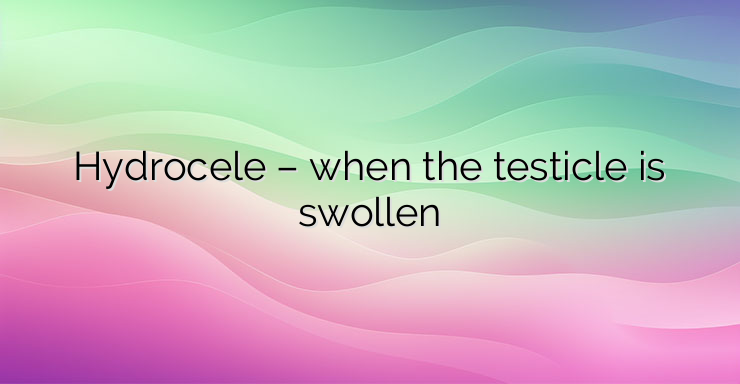A hydrocele is a collection of fluid between the visceral and parietal sheets of the tunica vaginalis, which cover the testicle. A hydrocele can be a congenital or acquired condition. The cause of congenital hydrocele is a defect in embryonic development. This defect is expressed in incomplete closure of the connection of the scrotum with the abdominal cavity, which leads to the accumulation of an excess amount of fluid. It usually closes spontaneously in the first months after birth, so a wait-and-see behavior is undertaken. The reasons for the development of acquired (secondary) hydrocele are inflammatory processes, trauma to the epididymis and testicles, tumor processes. In inflammatory processes – orchiepididymitis, “symptomatic” hydrocele often occurs. The amount of fluid is usually reabsorbed after the underlying process is mastered. Trauma is a common cause of injury to the testicular shell and fluid accumulation. Unnoticed trauma and microtrauma can also be the cause of hydrocele, which is more common in older patients. Tumors involving the testicles, as well as genital tuberculosis, are possible causes of hydrocele formation. Hydrocele develops slowly, usually painlessly, an ovoid swelling is formed in the corresponding scrotal half. The bump has a smooth surface, regular borders, and the overlying skin is smoothed. When the amount of collected fluid is greater, it is possible to have a feeling of heaviness in the scrotum. It intensifies during intense physical exertion and sexual intercourse. Sometimes pain is also felt, which spreads along the course of the inguinal canal. The testicle lies on the posterior underside of the bump. Hydrocele suppresses spermatogenesis and prevents sperm maturation. Low fertility in patients with hydrocele is emphasized. This is explained by the increased pressure exerted by the fluid on the testicle, with subsequent changes in its blood supply and violation of the thermoregime of the scrotum. In most patients, there is an impact on the quality of spermatological parameters, with subsequent infertility. Even very small hydroceles (5-6 ml) could change the intrascrotal temperature by 2 ?�. This determines the importance of looking for the problem and its solution, especially at a sexually mature age. Any patient with oligospermia and hydrocele should undergo surgical treatment and then be prescribed therapy to stimulate spermatogenesis. The differential diagnosis is made with inguinoscrotal hernia, with tumors of the testicle and epididymis, with hemato- and pyocele. Treatment is largely determined by the underlying cause. With an underlying inflammatory process, complete rest and wearing a suspensorium, supplemented with antibiotic therapy, is recommended. Puncture of the hydrocele with aspiration of the hydrocele fluid is ineffective, as recurrences are extremely common. Frequent punctures carry the risk of infection and adhesions. Therefore, it remains the method of choice only for patients in severe condition.The most effective treatment for hydrocele remains the classic surgical approach. The purpose of the operation is to evacuate the fluid from the scrotum without damaging the organs of the scrotal cavity, as well as to avoid recurrences. Depending on the size of the hydrocele and the thickness of the sheaths, the tunica vaginalis is turned over (Winkelmann’s method) or part of it is resected (Bergmann’s method). Possible complications of surgical treatment are edema, hematoma, wound infection and epididymitis. Sclerotherapy is an alternative treatment method suitable for the treatment of hydrocele, especially in elderly patients who refuse or have contraindications for surgical treatment. The technique involves an initial puncture and aspiration of the collected fluid in the scrotal cavity. Next, a combination mixture containing an anesthetic, most commonly lidocaine, and a sclerosing agent is injected. Tetracycline 10% or 95% ethyl alcohol are used as sclerosing agents. After the mixture is injected, a careful massage of the scrotum is carried out to distribute it evenly in its cavity. It is necessary to perform at least three sessions of sclerotherapy at an interval of 45 days. If there is no clinical improvement after them and a new relapse is observed, a surgical operation is necessary. Possible complications of sclerotherapy include pain, hematocele, and orchiepididymitis. References: Urology, Prof. Dr. P. Panchev


Leave a Reply